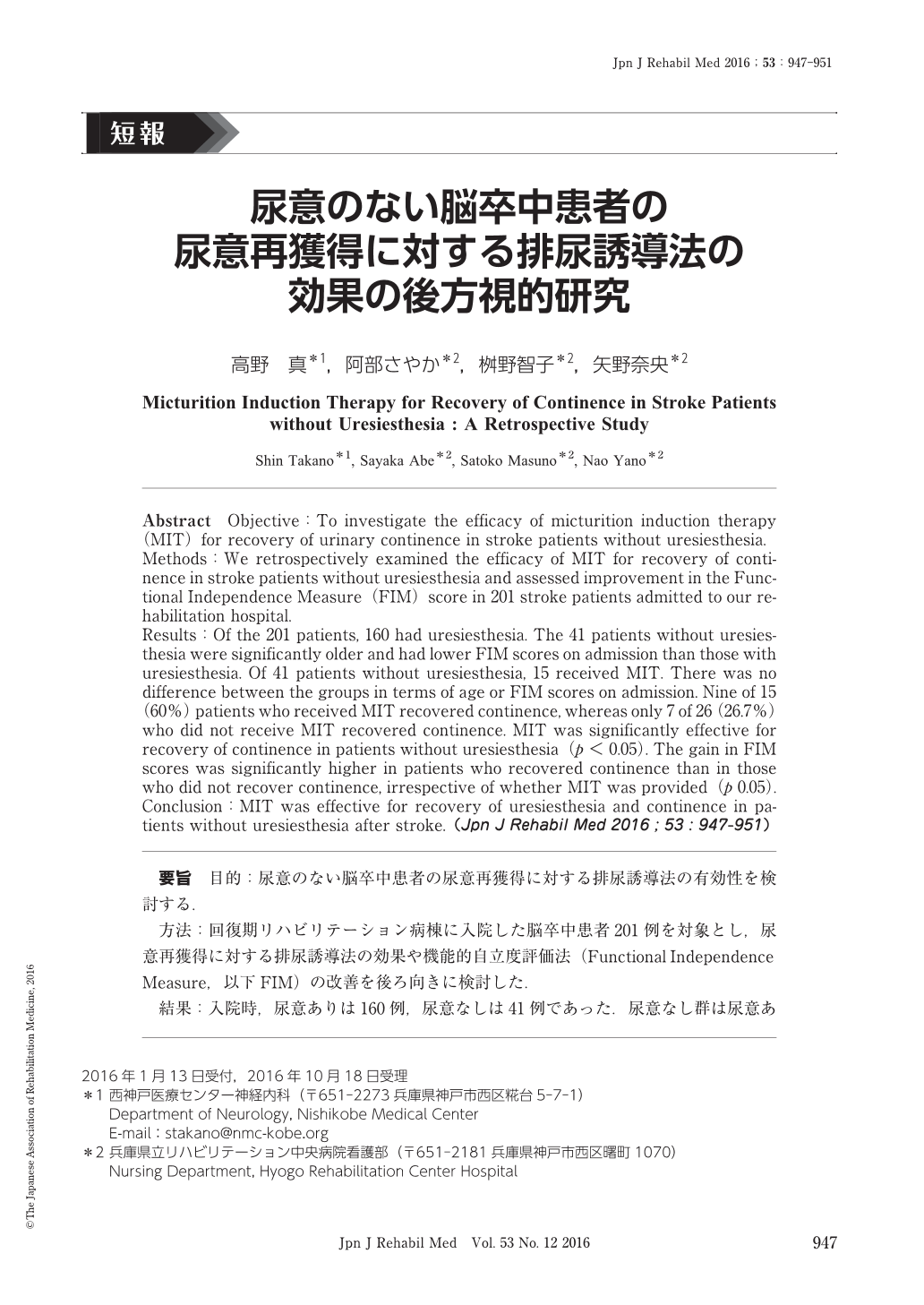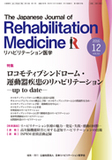Japanese
English
- 販売していません
- Abstract 文献概要
- 1ページ目 Look Inside
- 参考文献 Reference
要旨 目的:尿意のない脳卒中患者の尿意再獲得に対する排尿誘導法の有効性を検討する.
方法:回復期リハビリテーション病棟に入院した脳卒中患者201例を対象とし,尿意再獲得に対する排尿誘導法の効果や機能的自立度評価法(Functional Independence Measure,以下FIM)の改善を後ろ向きに検討した.
結果:入院時,尿意ありは160例,尿意なしは41例であった.尿意なし群は尿意あり群に比べ,有意に高齢で,入院時FIMの点数が低かった.尿意なし群のうち,排尿誘導法を施行した15例のうち9例(60%)に尿意が出現した.一方,排尿誘導法を施行しなかった26例では,7例(26.9%)にしか尿意が出現せず,尿意の再獲得は排尿誘導法施行群において,有意に高かった(p<0.05).また,排尿誘導法の有無にかかわらず,尿意の出現した群ではFIM利得が有意に大きかった.
結論:排尿誘導法は,尿意のない脳卒中患者の尿意再獲得に有効であった.排尿誘導法は,尿意のない脳卒中患者に対して,積極的に用いられるべきであると考えられた.
Abstract Objective:To investigate the efficacy of micturition induction therapy (MIT) for recovery of urinary continence in stroke patients without uresiesthesia.
Methods:We retrospectively examined the efficacy of MIT for recovery of continence in stroke patients without uresiesthesia and assessed improvement in the Functional Independence Measure (FIM) score in 201 stroke patients admitted to our rehabilitation hospital.
Results:Of the 201 patients, 160 had uresiesthesia. The 41 patients without uresiesthesia were significantly older and had lower FIM scores on admission than those with uresiesthesia. Of 41 patients without uresiesthesia, 15 received MIT. There was no difference between the groups in terms of age or FIM scores on admission. Nine of 15 (60%) patients who received MIT recovered continence, whereas only 7 of 26 (26.7%) who did not receive MIT recovered continence. MIT was significantly effective for recovery of continence in patients without uresiesthesia (p<0.05). The gain in FIM scores was significantly higher in patients who recovered continence than in those who did not recover continence, irrespective of whether MIT was provided (p0.05).
Conclusion:MIT was effective for recovery of uresiesthesia and continence in patients without uresiesthesia after stroke.

Copyright © 2016, The Japanese Association of Rehabilitation Medicine. All rights reserved.


